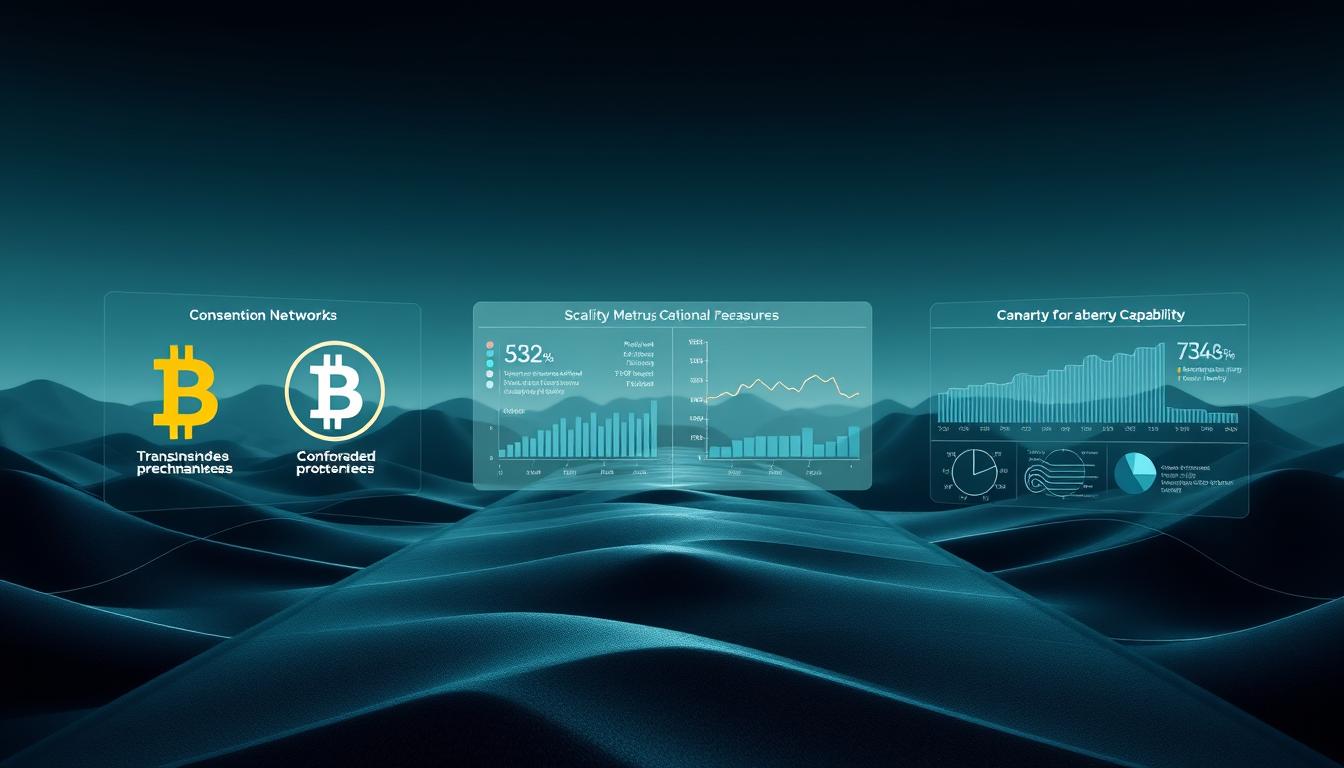Now Reading: DeFi Protocol Development: Secure & Scalable Solutions
- 01
DeFi Protocol Development: Secure & Scalable Solutions
DeFi Protocol Development: Secure & Scalable Solutions
The financial landscape is transforming at lightning speed. In 2024, over $200 billion sits in decentralized systems globally, a 650% jump from 2021 levels. Entrepreneurs see massive potential here, with active crypto wallets growing 3-4x year-over-year. This surge reflects a fundamental shift in how people manage assets.

Blockchain-powered solutions now deliver financial services without banks or borders. These systems operate 24/7, using transparent ledgers anyone can verify. Users trade, lend, and earn interest through automated tools built on mathematical rules.
Safety remains critical in this fast-moving space. While traditional finance relies on centralized safeguards, decentralized networks demand bulletproof code architecture. A single flaw can expose millions, making rigorous testing and audits non-negotiable.
The best projects balance technical excellence with real-world utility. They design intuitive interfaces while solving actual financial pain points. Sustainable models also consider token distribution and community governance from day one.
Key Takeaways
- Decentralized financial systems hold over $200 billion in assets, signaling mainstream adoption
- Blockchain technology enables transparent, global access to financial services
- Security audits and smart contract reliability are essential for user protection
- Successful projects combine technical execution with market-driven solutions
- Modern tools accelerate creation of compliant, user-friendly platforms
Understanding the Fundamentals of Decentralized Finance
The way people handle money is changing dramatically. Unlike traditional banks with set hours and strict rules, blockchain-based systems offer 24/7 access to financial tools. These platforms let users trade, save, and borrow directly through peer-to-peer networks.

Defining Core Principles
Decentralized finance thrives on three pillars: visibility, permanence, and openness. Every transaction gets recorded on public ledgers anyone can check. Once added, these records can’t be changed – creating trust through transparency.
Accessibility separates these systems from old-school banking. All you need is internet access. No credit checks. No minimum balances. This approach breaks down barriers for millions globally.
DApps vs Traditional Systems
Traditional apps like banking software rely on corporate decisions. Blockchain-based tools operate through coded rules and community input. Users keep full control of their assets instead of handing keys to third parties.
Smart contracts automate complex deals without human middlemen. This cuts errors and costs while enabling services like instant loans or automated investments. Unlike centralized platforms, anyone can build on these networks without asking permission.
Old financial systems often lock out underserved groups. Decentralized alternatives welcome anyone with a smartphone, creating equal opportunities worldwide.
The Evolution of DeFi in Today’s Digital Landscape
Global financial systems are witnessing a paradigm shift driven by blockchain innovation. The total value locked in decentralized networks skyrocketed from $150 billion in 2021 to over $200 billion by 2024, proving mainstream acceptance of alternative financial models. This growth coincides with a 3-4x surge in active digital wallets, showing millions now trust these systems for daily transactions.

Security improvements mark a critical turning point. While hackers stole $2.3 billion from blockchain platforms in 2021, enhanced smart contract audits and real-time monitoring reduced losses to $1.9 billion in 2024 – despite 30% more assets being managed. Developers now prioritize preventive measures over reactive fixes.
The landscape has diversified through three key advancements:
- Cross-chain bridges enabling asset transfers between networks
- Layer 2 solutions cutting transaction costs by 80%
- Regulated stablecoins merging traditional finance with blockchain efficiency
These innovations create opportunities for next-generation financial tools that serve both retail users and institutions. Modern platforms now process transactions worth billions daily while maintaining compliance with evolving regulations – a balance unthinkable three years ago.
Exploring DeFi Protocol Development: A Step-by-Step Overview
Building financial infrastructure on blockchain demands precision from the first line of code. Architects face critical choices early – selecting networks and designing tokenomics models that shape economic incentives. These decisions lock systems into specific technical paths, much like pouring concrete for a skyscraper’s foundation.
Immutable logic forms the core of blockchain-based systems. Once deployed, code can’t be altered – a double-edged sword ensuring transparency while demanding flawless execution. Teams now adopt proxy patterns and migration blueprints to enable future upgrades without sacrificing security.
Key Milestones in Financial Innovation
Pioneering platforms reshaped digital finance through groundbreaking mechanisms:
- Automated pricing algorithms replacing order books
- Collateral-free loans settled within single transactions
- Reward systems transforming passive asset holding
Modern tools accelerate creation while maintaining robustness. Frameworks like OpenZeppelin provide pre-audited components, reducing risks for teams building decentralized finance platforms for beginners. Stress simulations now mimic extreme market swings, exposing vulnerabilities before launch.
Security remains paramount in this irreversible environment. Multi-stage audits examine every code permutation, while governance models balance community control with necessary upgrades. Successful deployments synchronize technical execution with user education, creating systems that endure market cycles and regulatory shifts.
Choosing the Right Blockchain Network and Tech Stack
Selecting the foundation for financial tools requires careful analysis of technical capabilities and user needs. Network choice impacts everything from transaction speed to security frameworks, making this decision critical for long-term success.

Comparing Leading Network Options
Ethereum dominates with its robust ecosystem and established tools. Developers favor Solidity for creating agreements on this network, though rising activity can increase transaction costs during peak times.
Solana shines for high-speed applications needing instant settlements. Its unique architecture processes thousands of operations per second at minimal fees. However, this requires expertise in Rust programming for custom solutions.
Binance Smart Chain offers middle-ground efficiency. EVM compatibility lets teams reuse existing code while benefiting from faster confirmations than Ethereum mainnet. This makes it popular for cost-sensitive projects.
Building With Precision Tools
Frameworks like Hardhat simplify creating and testing automated agreements. These environments provide simulation capabilities for stress-testing logic before deployment. Truffle complements this with debugging features that catch vulnerabilities early.
Libraries such as Web3.js bridge user interfaces with blockchain operations. Ethers.js offers similar functionality with enhanced security measures. Both tools help developers build intuitive dashboards for complex financial interactions.
Multi-network strategies are gaining traction as interoperability improves. Teams now deploy across multiple chains to balance speed, costs, and accessibility. This approach requires careful planning but maximizes reach across different user groups.
Mastering DeFi protocol development with Strategic Tech Choices
Crafting next-generation financial platforms demands equal parts technical rigor and design empathy. Teams must weave sophisticated financial functionality into interfaces even traditional users find intuitive. Overly complex dashboards scare away 72% of first-time users, according to recent fintech studies.
Modular smart contract architecture solves critical upgrade challenges. Proxy patterns let systems evolve without disrupting user assets – a must for maintaining trust in decentralized environments. Gas optimization techniques further enhance accessibility, slashing transaction costs by up to 40% through efficient coding practices.
Adopting Web 2.0 design principles bridges the crypto knowledge gap. Clear visual guides transform advanced features like yield farming into step-by-step workflows. Interactive tutorials and real-time support chatbots reduce onboarding friction dramatically.
Maintainable codebases ensure long-term viability as platforms scale. Version-controlled repositories and automated testing frameworks prevent technical debt accumulation. Cross-functional teams pair blockchain experts with UX specialists to balance innovation with reliability.
The most competitive solutions combine battle-tested infrastructure with bold experimentation. While leveraging established tools like OpenZeppelin libraries, forward-thinking developers integrate zero-knowledge proofs for enhanced privacy. This dual approach future-proofs platforms without compromising current performance.
Implementing Best Practices for Smart Contract Security
Securing digital agreements demands relentless precision in today’s blockchain-powered systems. While losses from vulnerabilities dropped to $1.9 billion in 2024 (from $2.3 billion in 2021), risks persist across financial applications. Three-layer validation processes now form the gold standard – combining automated checks, peer reviews, and real-world simulations.
Conducting Thorough Audits and Testing
Modern teams test code through multiple stages before deployment. Unit tests verify individual functions, while scenario analysis mimics market crashes and flash loan attacks. Third-party auditors like Quantstamp examine logic flows using tools like MythX to detect hidden flaws.
Leveraging OpenZeppelin and Other Security Tools
Frameworks like OpenZeppelin provide pre-audited building blocks for Ethereum smart contracts, reducing development risks. Developers combine these with runtime checkers like Slither and formal verification platforms such as CertiK. Continuous monitoring systems track deployed agreements 24/7, alerting teams to anomalies.
Proactive measures now include security best practices like time-locked upgrades and multi-signature controls. These layers create defense mechanisms against both technical exploits and governance attacks. As systems grow more complex, combining automated safeguards with human expertise remains critical for protecting user assets.
FAQ
What makes decentralized finance different from traditional banking?
Decentralized finance eliminates intermediaries like banks by using blockchain technology. Transactions are automated through smart contracts, enabling peer-to-peer lending, borrowing, and trading with full transparency.
How do blockchain networks like Ethereum and Solana affect transaction costs?
Ethereum’s high gas fees can make small transactions costly, while Solana offers faster speeds and lower fees. Binance Smart Chain balances affordability and compatibility with Ethereum-based tools.
Why are audits critical for applications handling digital assets?
Audits identify vulnerabilities in code that could lead to exploits. Platforms like CertiK and Trail of Bits review smart contracts to ensure funds remain secure before launch.
What tools help prevent vulnerabilities in financial applications?
Frameworks like OpenZeppelin provide tested templates for secure coding. Tools such as Slither analyze contract logic to flag risks like reentrancy attacks or overflow errors.
Can decentralized platforms support services like lending without intermediaries?
Yes. Platforms like Aave and Compound use smart contracts to automate lending pools. Users earn yield by supplying assets or borrow against collateral without third-party approval.
How does staking contribute to network security?
Staking involves locking tokens to validate transactions in proof-of-stake systems. This incentivizes honest participation and reduces energy use compared to proof-of-work models.
What risks should users consider before using decentralized platforms?
Smart contract bugs, volatile asset prices, and regulatory shifts pose risks. Users should research platforms, diversify assets, and avoid over-collateralization in volatile markets.












